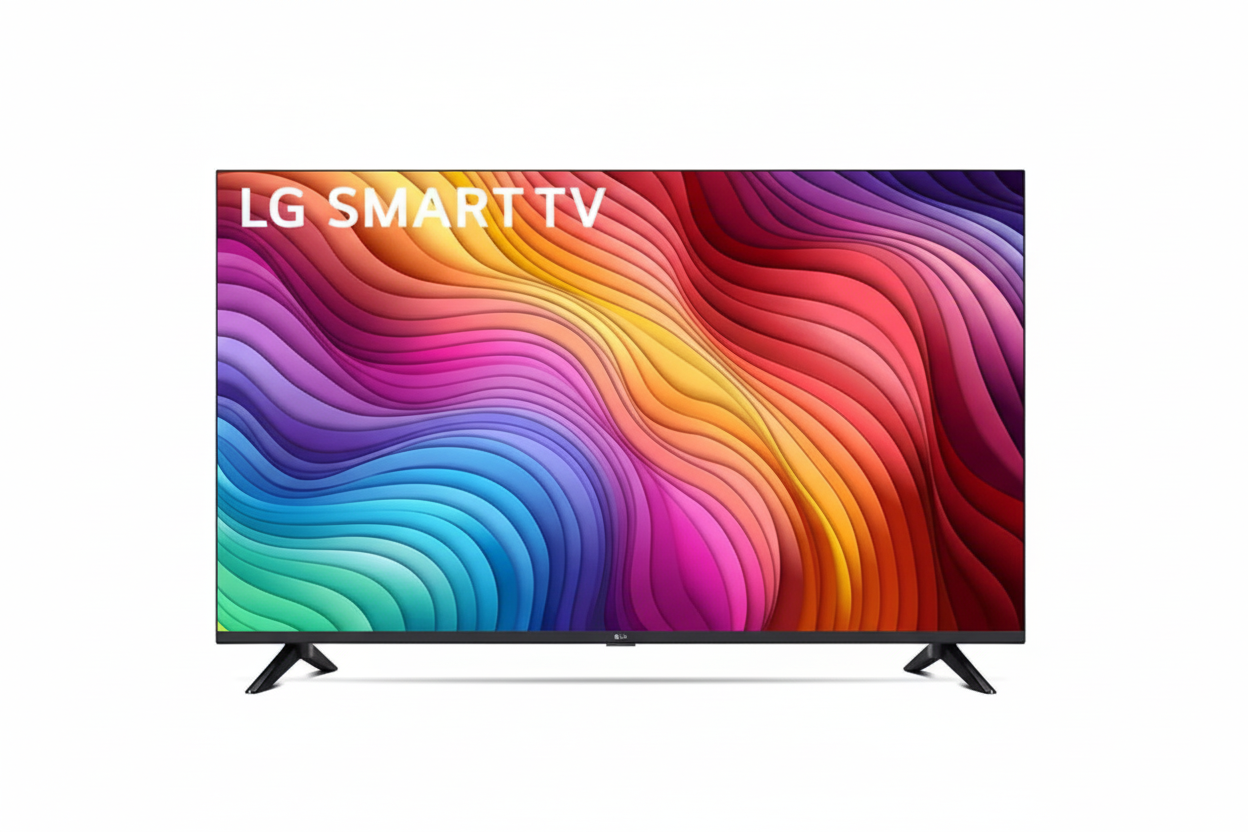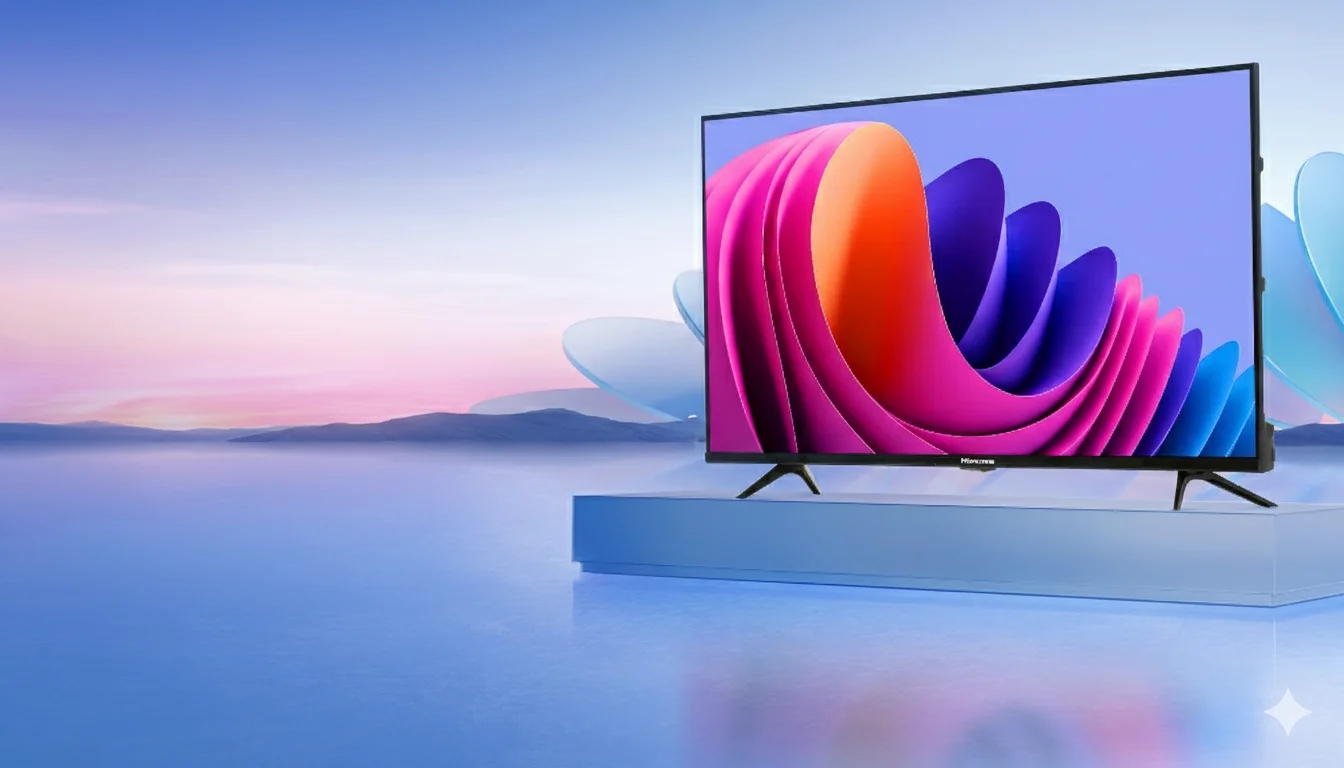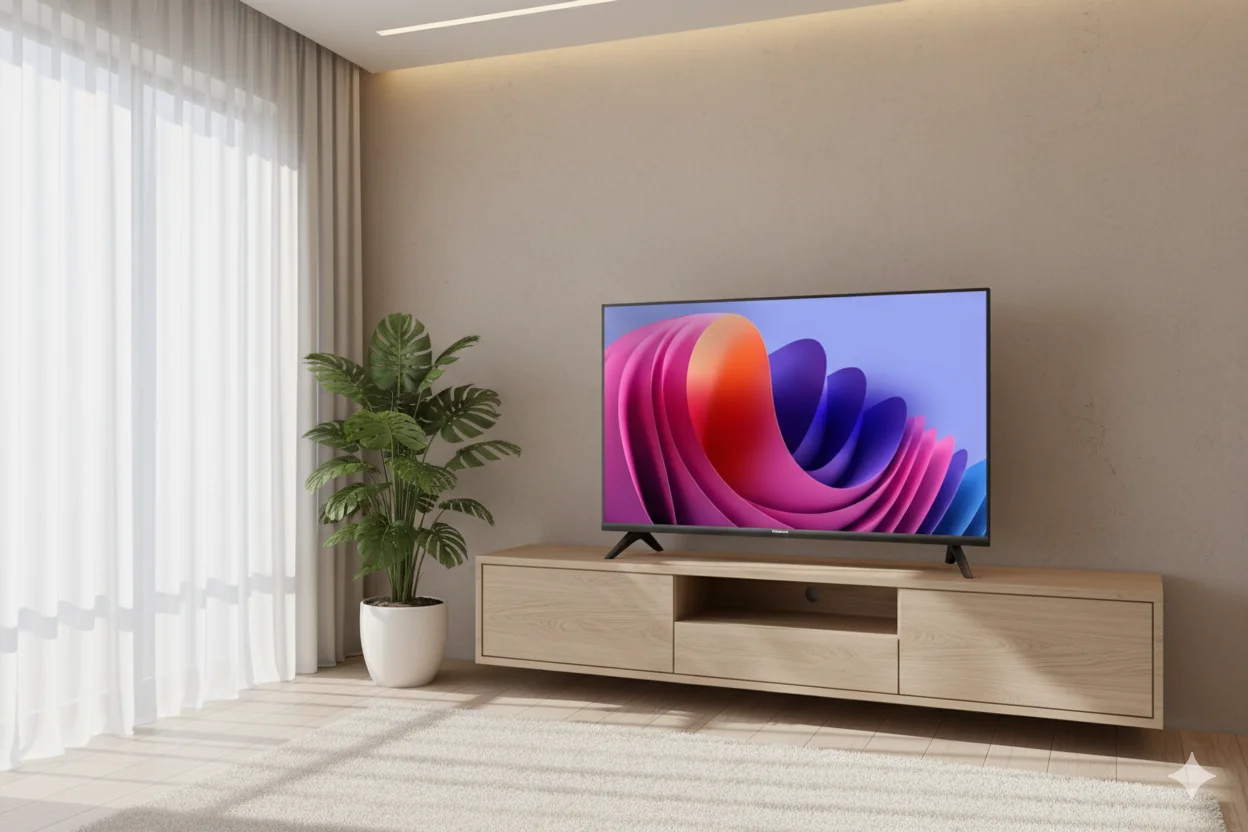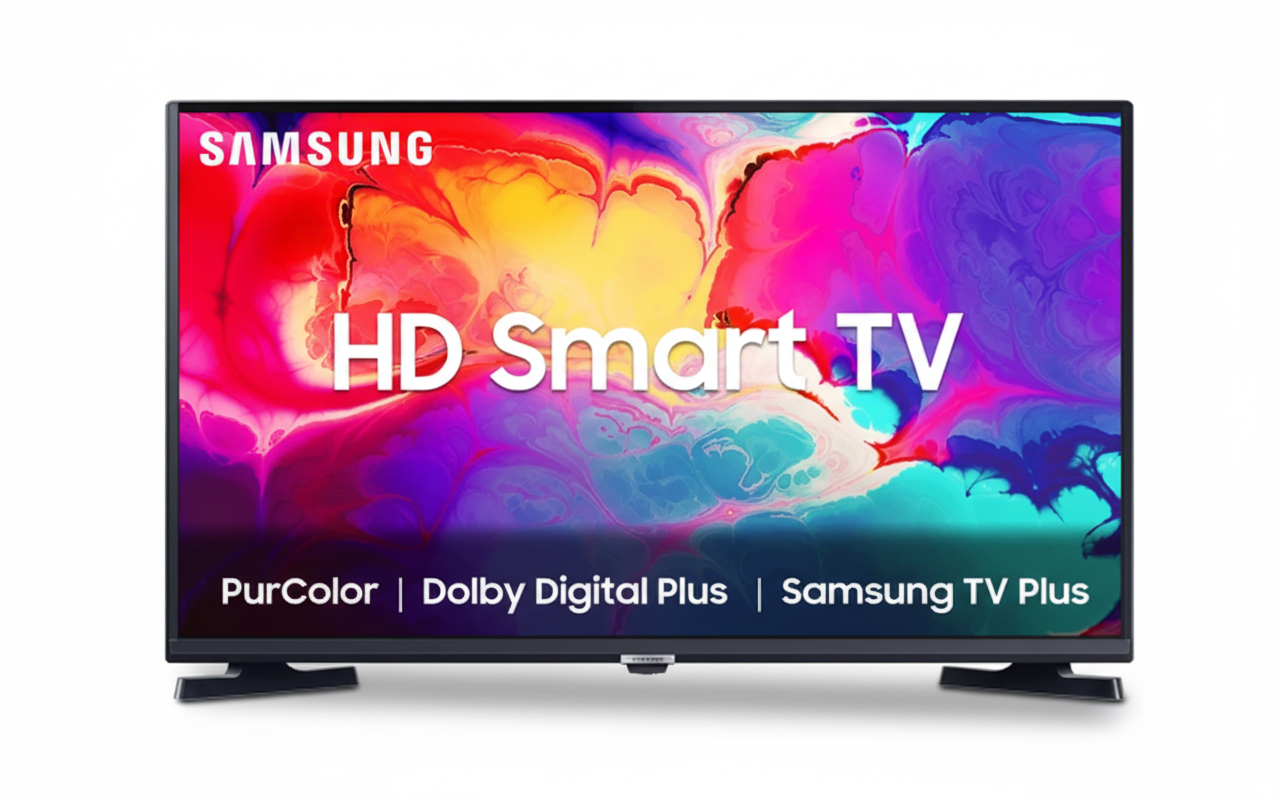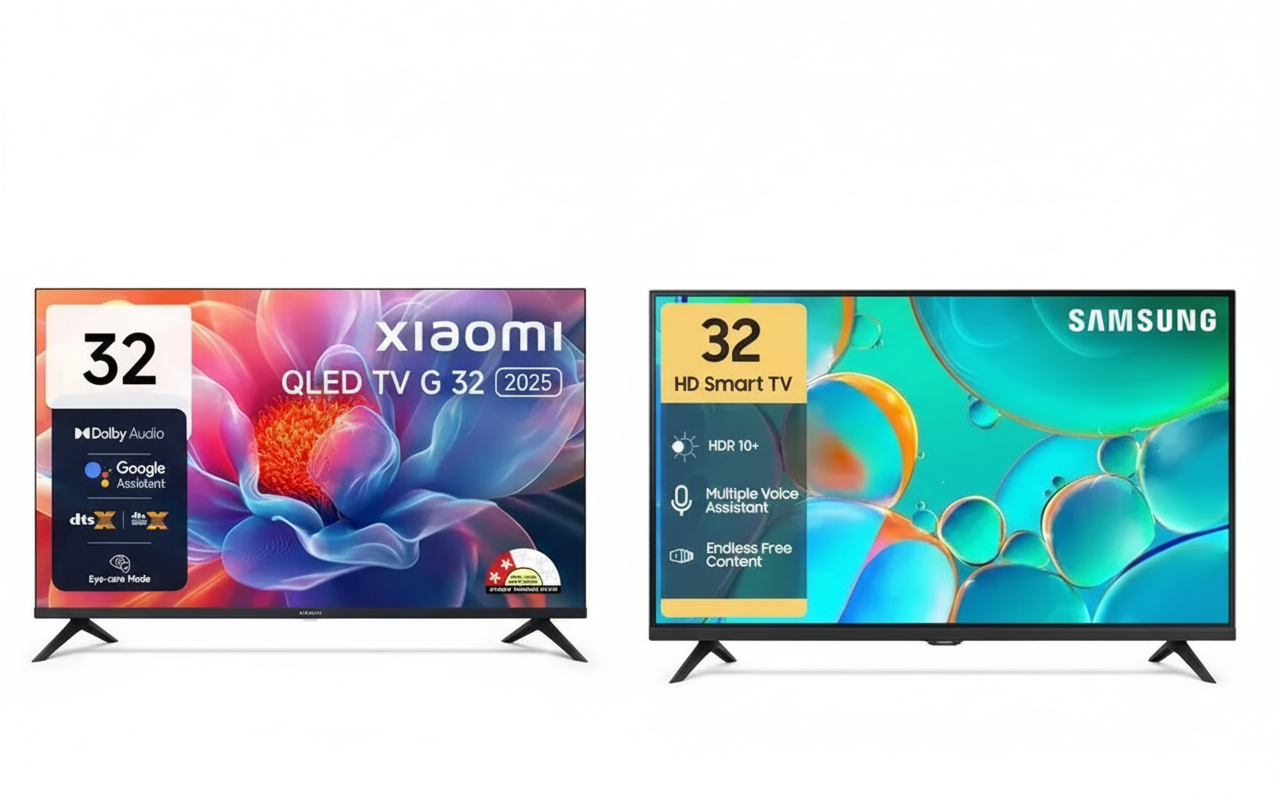
Xiaomi G Series QLED vs. Samsung Tizen TV (32-inch, 2025)
A head-to-head battle between two of the best budget 32-inch smart TVs.
At a Glance
Xiaomi G Series QLED (L32MB-APIN)
4.0/5 (7,206 Ratings)
- Price: ₹12,499
- Display: 32″ QLED, HD Ready
- Sound: 20W with Dolby Audio
- OS: Google TV
Samsung Tizen TV (UA32H4500FUXXL)
4.3/5 (1,13,813 Ratings)
- Price: ₹12,740
- Display: 32″ LED, HD Ready
- Sound: 20W with OTS Lite & Q-Symphony
- OS: Tizen
Display Technology: QLED vs. LED
Xiaomi’s QLED Panel
Xiaomi takes the lead with its QLED display, which uses Quantum Dot technology to produce a wider range of colors (90% DCI-P3) and higher brightness. This results in more vibrant, lifelike, and punchy images compared to a standard LED TV. It also supports HDR 10.
Samsung’s Advanced LED
Samsung uses a high-quality LED panel enhanced with its PurColor technology for accurate color reproduction and Contrast Enhancer for better depth. It also supports HDR10+, a slightly more advanced HDR format than the Xiaomi. While excellent for an LED, it can’t fully match the color volume of QLED.
Audio Experience
Xiaomi’s Dolby Audio System
The Xiaomi TV comes with a standard 20W speaker setup supported by Dolby Audio and DTS. This provides clear, balanced sound that is perfectly suitable for everyday TV shows, news, and casual movie watching.
Samsung’s Sound Innovations
Samsung also has a 20W system but enhances it with advanced software. Object Tracking Sound (OTS) Lite makes audio feel like it’s coming from where the action is on-screen, while Q-Symphony allows the TV speakers to work in harmony with a Samsung soundbar for a richer, more immersive soundstage.
OS, Hardware, and Performance
Operating System
Xiaomi uses Google TV, offering vast app support and a content-forward interface. Samsung uses its proprietary Tizen OS, known for its speed, stability, and unique features like Samsung TV Plus (100+ free channels).
Processor & RAM
Both TVs are equipped with a capable Quad-Core processor, 1GB of RAM, and 8GB of storage. This ensures smooth navigation and app performance on both operating systems for everyday use.
Refresh Rate
The Xiaomi TV has a standard 60Hz refresh rate, which is great for movies and TV shows. The Samsung TV has a 50Hz refresh rate, which is common in its price range but slightly lower than the Xiaomi.
Connectivity, Design, and Warranty
Ports & Inputs
Both TVs offer two HDMI ports. Xiaomi has an edge with two USB ports and a headphone jack. Samsung provides one USB port but includes an Ethernet port for a stable wired internet connection.
Design and Build
Xiaomi boasts a premium-looking metal, bezel-less design. Samsung features a slim, modern look that is also very appealing. Both are lightweight and suitable for tabletop or wall-mounted setups.
Warranty
Both manufacturers offer excellent warranty packages. Each provides a 1-year comprehensive warranty plus an additional 1-year warranty specifically for the display panel, giving buyers peace of mind.
Specification Summary
| Feature | Xiaomi G Series QLED | Samsung Tizen TV |
|---|---|---|
| Display Tech | QLED | LED |
| HDR Support | HDR10 | HDR10+ |
| Sound Features | Dolby Audio, DTS | OTS Lite, Q-Symphony, Adaptive Sound |
| Operating System | Google TV | Tizen |
| Refresh Rate | 60Hz | 50Hz |
| USB Ports | 2 | 1 |
| Headphone Jack | Yes | No |
| Warranty | 1+1 Year (Panel) | 1+1 Year (Panel) |
Final Verdict & Recommendation
Choose the Xiaomi G Series TV if…
…picture quality is your absolute top priority. The QLED panel delivers superior color and brightness. It’s also the better choice if you prefer the Google TV ecosystem and need a headphone jack for private listening.
Choose the Samsung Tizen TV if…
…you value a refined and feature-rich smart experience. Samsung’s Tizen OS, advanced audio features like Q-Symphony, and value-adds like Samsung TV Plus and Knox Security make it a powerful all-around entertainment hub.
Overall Recommendation
For pure visual fidelity, the **Xiaomi G Series QLED** has the edge. For a more feature-packed and secure smart ecosystem with superior sound software, the **Samsung Tizen TV** is an outstanding choice. The decision comes down to QLED picture vs. a smarter, more integrated OS experience.
